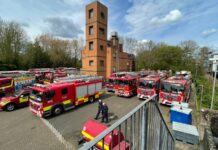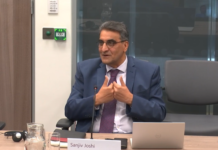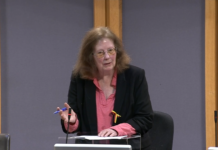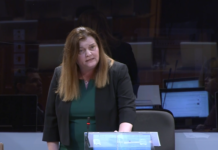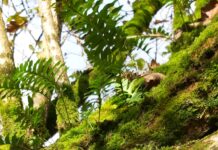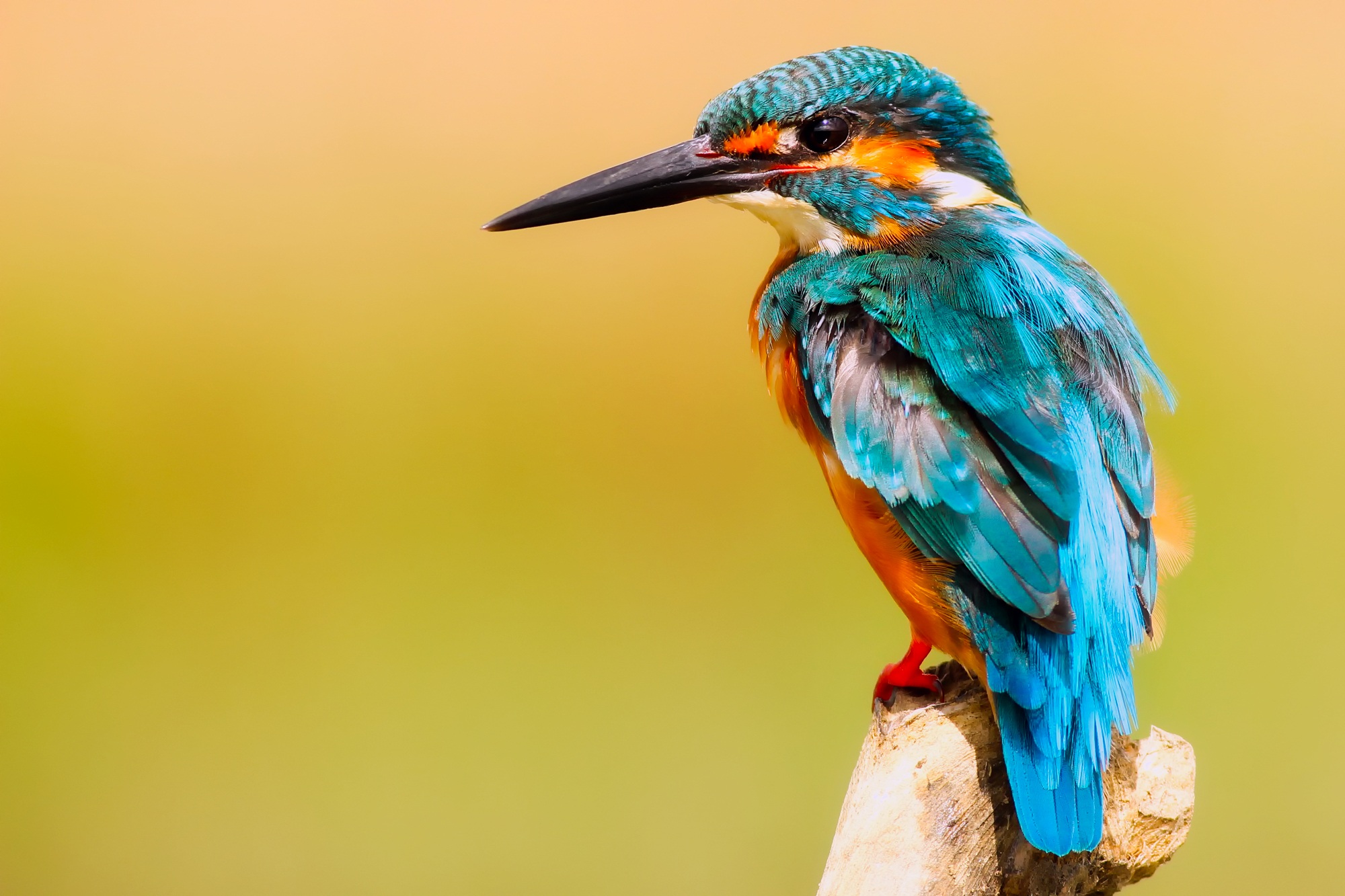
Neath Port Talbot Council’s Biodiversity Team has chosen its “Top 20 Special NPT Species” including the UK’s biggest spider, Kingfishers, Porpoises, Honey Buzzards, Atlantic Salmon and an exotic bat with really big feet.
It comes as a United Nations research group published the results of a global study warning that a million species now face extinction as a result of human action.
According to the report, published in May 2019, deforestation has led to the loss of greenhouse gas-absorbing trees, pollinating insects like bees are dying and polluted waters are killing fish and limiting clean drinking water.
Neath Port Talbot Council, under its biodiversity action plan, is doing all it can to protect and enhance the many species of plants and wildlife across the county borough and has pledged to promote biodiversity. It also has a legal duty to protect the resilience of local ecosystems under the Environment (Wales) Act 2016.
Last year, the Council helped uncover one of the world’s rarest millipedes, Turdulisomacfturdulorum, which was discovered during a Halloween “Bug Hunt” at Craig Gwladus Country Park, near Cilfrew, Neath. The creature is so rare it is only found at three spots, all in South Wales.
Councillor Annette Wingrave, the Council’s Cabinet Member for Regeneration and Sustainable Development, who also sits on the authority’s Biodiversity Forum said: “We are lucky to have such a rich and diverse range of wildlife here in Neath Port Talbot and we are committed to protecting the environment in whatever way we can at a time, according to the UN, when many species across the world are at risk.”
The Council’s Biodiversity Teamhas named these at its Top 20 Special NPT Species:
KINGFISHER Alcedoatthis : (Best Spot) Neath Canal. They are small, bright blue and orange birds which fly fast and low over water.
BARN OWL Tytoalba : (Seven Sisters) Found in a variety of habitats but mostly in open grassland, woodland edge and areas of mixed traditional farmland.
HONEY BUZZARDPernisapivorus: (Resolven Valley) :They winter in Africa but breed in the UK in small numbers.
CROSSBILL Loxiacurvirostra : (Crynant Forest) These large finches have striking colours, the males are bright red, the females green.
SPOTTED FLYCATCHERMuscicapastriata: (Glanrhyd Plantation) :These are grey-brown in colour with an off-white breast, streaked with darker grey and a streaked forehead.
BROWN HARE Lepus europaeus: (Open land, Margam) These are seen much less than the introduced Rabbit but can still be found in NPT.
PORPOISE Phocoenaphocoena: (Anywhere with a sea view) This species is a common cetacean in our waters, travelling around in small pods feeding on fish just off the coast.
DAUBENTON’S BAT Myotisdaubentonii: (Gnoll Park Lake) These specialise in feeding over water and have exceptionally large feet they use to grab insects off water surfaces.
ADDER Viperaberus: (Tonmawr) :The only venomous snake in the UK but not an aggressive species
FEN RAFT SPIDER Dolomedesplantarius: (Tennant Canal) :The UK’s largest spider and one of the rarest.
SCARCE BLUE-TAILED DAMSELFLY Ischnurapumilio: (Rhosaman Tanks Outfall) :Found flying in low vegetation at flushes and pools.
SHRILL CARDER BEE Bombussylvarum : (Baglan Bay) : Very rare, it’s only found in a handful of places in the UK with NPT being a stronghold in South Wales.
DARK GREEN FRITILLARY Argynnisaglaja : (Bryn) A very large butterfly which is bright orange with black patterns on the upper wing and a green sheen to the underwing.
SMALL BLUE BUTTERFLY Cupidominimus: (Around NPT Council’s offices at the Quays) This is the smallest UK butterfly but can be seen in quite large numbers where it occurs.
ATLANTIC SALMON Salmo salar : (Ystalyfera weir) Its dramatic life cycle is well known with the adults returning from the sea to the rivers where they hatched to spawn.
SEA STOCK Matthiolasinuata : (Little Warren) An attractive plant found in sand dunes. It has a grey down over the leaves and stem, beautifully complementing its pale lilac flowers.
ROYAL FERN Osmundaregalis: (Square Pond/Neath Canal) One of the largest European ferns. The plant has stayed mostly unchanged for 180m years.
COTTON GRASS Eriophorumangustifolium: (Rhos Common) Despite the name this species is actually a sedge. The flowers turn into bristle like cottony seed heads in June/July, creating a beautiful effect.
BLUEBELL Hyacinthoides non-scripta: (CoedAlltacham woods, Rhyd-y-Fro) Bluebells can be seen in the Spring carpeting the ground in woodlands and fields.
YEW TREE Taxusbaccta: (St John the Baptist Church, Glyncorrwg) Yew Trees are claimed to be the longest-living in Europe. They can live 600-800 years, sometimes over 1000.
Yr‘20 rhywogaethbywydgwylltsyddar y brig’ yng
Nghastell-nedd Port Talbot
Mae TîmBioamrywiaethCyngor Castell-neddPort Talbot wedidewis “Yr 20 RhywogaethArbennigsyddar y brig yn CNPT”, gangynnwyscorrynmwyaf y DeyrnasUnedig, Glas y Dorlan, y Llamhidydd, Boda’rMêl, EogyrIwerydd ac ystlumegsotigsydd â thraedanferth.
Daw hynwrthiun o grwpiauymchwil y CenhedloeddUnediggyhoeddicanlyniadauastudiaethfyd-eangynrhybuddio bod miliwn o rywogaethaubellachynwynebudifodiant o ganlyniadiweithredoeddpobl.
Ynôlyradroddiad, a gyhoeddwydymmis Mai 2019, maedadgoedwigowediarwainat gollicoedsy’namsugnonwyontŷgwydr, maepryfedpeilliofelgwenynynmarw, ac maedyfroeddllygredigynlladdpysgod ac yncyfynguar y dŵryfedglân.
O daneigynllungweithredubioamrywiaethmaeCyngor Castell-nedd Port Talbot yngwneudpopeth o fewneialluiddiogelu a gwellasefyllfa’rrhywogaethauniferus o blanhigion a bywydgwylltar draws y sir, ac maewediaddohybubioamrywiaeth. Mae dyletswyddgyfreithiolarnohefydiddiogelugwydnwchecosystemaulleol o danDdeddfyrAmgylchedd (Cymru) 2016.
Y llynedd, cynorthwyodd y Cyngoriddatgeluun o filtroediaidprinnaf y byd, Turdulisomacfturdulorum, a ddarganfuwydynystod “HelfaDrychfilod” Galan GaeafymMharcGwledig Craig Gwladus, gerCilffriw, Castell-nedd. Mae hwnyngreadurmorbrinfelmai dim ondmewn tri man y ceirhydiddo, pob un ohonyntyn Ne Cymru.
Dywedodd y Cynghorydd Annette Wingrave, Aelod Cabinet y CyngordrosAdfywio a DatblyguCynaliadwy, syddhefydynaelod o FforwmBioamrywiaethyrawdurdod: “Rydymni’nffodus bod gennymniystodmoreang ac amrywiol o fywydgwylltymayngNghastell-neddPort Talbot, ac rydymni’nymroddedigiddiogelu’ramgylcheddymmhafforddbynnag y gallwn, a hynnyaradeg, ynôl y CenhedloeddUnedig, pan follawer o rywogaethauar draws y bydmewnperygl.”
Mae TîmBioamrywiaeth y Cyngorwedienwi’rcanlynolyn 20 RhywogaethArbennigsyddar y brig yn CNPT:
GLAS Y DORLANAlcedoatthis : (Man Gorau)CamlasNedd. Adar bach, glasllachar ac orenyw’rrhain, sy’nhedfanyngyflym ac yniseluwchben y dŵr.
TYLLUAN WENTytoalba : (Aberdulais) Ceirhydiddimewnamrywiaeth o gynefinoedd, ondynbennafarlaswelltiragored, argyrioncoedydd, ac mewnmannaulleceirtirffermiotraddodiadolcymysg.
BODA’R MÊLPernisapivorus: (DyffrynResolfen) Mae’nmyndiAffricadros y gaeaf, ondmaeniferoeddbachynbridioyn y DeyrnasUnedig.
GYLFINGROES Loxiacurvirostra : (Coedwig y Creunant) Mae lliwiautrawiadoli’rllinosiaidhyn, ganfod y gwrywodyngochllachar, a’rbenywodynwyrdd.
GWYBEDOG MANNOG Muscicapastriata: (PlanhigfaGlanrhyd) Lliwllwydfrownsyddi’rrhain, er bod y frestynlled-wyngydastreipiaullwydtywyllach a thalcenstreipiog.
YSGYFARNOGLepus europaeus: (Tiragored, Margam) Gwelir y rhainynllawerllaiamlna’rGwningen, a gyflwynwydganbobl, ondmaentyn dal i’wgweldyn CNPT.
LLAMHIDYDDPhocoenaphocoena: (Unrhyw le sydd â golygfao’rmôr) Mae’rrhywogaeth hon ynforfilcyffredinyneindyfroedd, ac ynteithio o gwmpasmewngrwpiaubachynbwydoarbysgodynagos at yrarfordir.
YSTLUM Y DŴRMyotisdaubentonii: (LlynParc y Gnoll)Mae’rrhainynarbenigomewnbwydouwchbendŵr, ac maeganddyntdraedeithriadol o fawrermwynmedrucipiopryfed o wyneb y dŵr.
GWIBERViperaberus: (Tonmawr) Yrunigneidrwenwynigyn y DeyrnasUnedig, ondnidyw’nrhywogaethymosodol.
CORRYN RAFFT Y FFEN Dolomedesplantarius: (CamlasTenant) Corrynmwyaf y DeyrnasUnedig, ac uno’rrhaimwyaf prin.
MURSEN GYNFFON LAS BRINIschnurapumilio: (ArllwysfaTanciauRhosaman) Ceirhydiddi’nhedfanmewnllystyfiantiselwrthbyllau a llemaedŵrynrhuthro.
CARDWENYNEN FEINLAIS Bombussylvarum: (Bae Baglan) Mae hon ynbriniawn, ac i’wchanfodmewnllonddwrn o fannauynunigyn y DeyrnasUnedig. Mae CNPT ynuno’ichadarnleoeddyn Ne Cymru.
BRITHEG WERDDArgynnisaglaja: (Bryn) Pili palamawriawn, orenllachar, gydaphatrymau du ar ran uchafyraden a gwawrwerdd o danyraden.
GLESYN BACHCupidominimus: (O amgylchswyddfeyddCyngor CNPT yn y Ceiau) Hwnyw’r pili palalleiaf y DeyrnasUnedig, ondmaeniferoeddeithamawrohonoi’wgweldllemae’ndigwydd.
EOG YR IWERYDDSalmo salar: (Cored Ystalyfera) Gwyddomfodeigylchoesynddramatig, ganfodyroedolionyndychwelydo’rmôri’rafonyddllecawsanteudeorisilio.
MURWYLL ARFORMatthiolasinuata: (Little Warren) Planhigyndeniadol y ceirhydiddomewntwynitywod. Mae blew bychainllwyddros y daila’rcoesyn, sy’ncyd-fyndynhyfrydâ’rblodauleloggolau.
RHEDYNEN GYFRDWY Osmundaregalis: (PwllSgwâr/CamlasNedd) Un o redynmwyafEwrop. O’rbraiddmae’rplanhigynhwnwedinewiders180mo flynyddoedd.
PLU’R GWEUNYDDEriophorumangustifolium: (CominRhos) Hesgyw’rrhywogaeth hon mewngwirionedd. Mae’rblodau’ntroi’nhadlestricotwmblewogynystodMehefin/Gorffennaf, gangreueffaithhardd.
CLYCHAU’R GOGHyacinthoides non-scripta: (CoedAlltycham, Rhyd-y-Fro) Mae Clychau’r Gog i’wgweldyn y gwanwynyngarpedarlawryn y coedydda’rcaeau.
YWENTaxusbaccta: (EglwysSant Ioan Fedyddiwr, Glyncorrwg) HonnirmaiCoedYwyw’rcoedsy’nbywhirafynEwrop. Maennhw’ngallubyw am 600-800 o flynyddoedd, ac weithiaudros1000.
Help keep news FREE for our readers
Supporting your local community newspaper/online news outlet is crucial now more than ever. If you believe in independent journalism, then consider making a valuable contribution by making a one-time or monthly donation. We operate in rural areas where providing unbiased news can be challenging. Read More About Supporting The West Wales Chronicle












